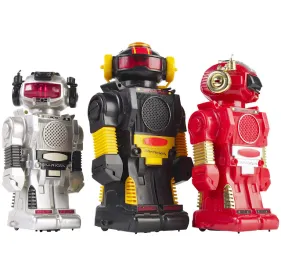Social distancing probably won’t produce my personal jetpack. (I can’t imagine the amount of power needed to lift me off the ground through forced air – GE would need to make my engine.) However, the current crisis may accelerate the trend toward adoption of cool tech that has been waiting in the wings.
Of course our time at home will boost background technologies like 5G connectivity and videoconferencing, but where is the fun in thinking about that?
Need to get to the office but avoid all human contact? The General Motors Cruise Origin, unveiled this year, looks like a rolling toaster with double sliding door access and no manual controls, but it can move you across town without encountering another person. Will the COVID-19 crisis speed the introduction of driverless vehicles?
With the nation stuck at home binging on television while the TV producers try to create content without physical interactions, why not let the AI do the work? We are already seeing deepfake commercials where reporters from the 1990s predict the future with eerily accurate specificity. Since at least 2016, when British actor Peter Cushing performed through the magic of CGI in a Star Wars feature two decades after his death, we know that AI not only creates unworldly monsters, but realistic speech and movements from actors who never really said or did those things. If the quarantine extends, how much deepfake magic will appear in new shows?
Maybe biometrics will benefit too, outside of Illinois of course. A touchless technology that uses your face geometry or registering identity through the finger scanner on a personal smartphone may be the beneficiaries of our need to pay for goods and services without fondling filthy lucre or pressing keypads tapped by a thousand other fingers. We know the tech works; we just haven’t implemented it yet.
But the virus-fighting tech that interests me most is the humble delivery robot. If you live downtown in a condo tower, why does anyone need to bring food to your door? It can be dropped off by machine. And out in the Styx it is easier just to fly the goods straight to your house by drone. Once again, we know how to perform these tasks, but have not been properly incentivized to broadly implement the technology yet.
At least one of my law partners in Houston has participated in the Walmart delivery robot program using equipment from tech start-up Nero. No drivers, no unpackers, just a tiny square car that rolls into your driveway and send you a text alerting you to the delivery. These delivery robots were pressed into service into COVID-19 field hospitals and distribution centers. The Wall Street Journal reports
“Some variation of this process, a sort of unexpected wartime mobilization, is happening in cities including Tel Aviv; Hangzhou, China; Washington, D.C.; and Grand Forks, N.D. These efforts range from pilot programs to large-scale operations, with hundreds of delivery robots traveling on roads or in the air, collectively covering thousands of miles.
While some of these robots are quickly becoming an important part of health-care supply chains, most are helping simply by allowing “contactless” delivery of groceries and other essentials.”
A real-life proof-of-concept experiment may push delivery robots into the mainstream. Now that we are more sensitive to unnecessary human contact, we are open for the obvious applications of this useful appliance.
This may be a classic implementation dynamic combining a technology working well but is slowly adopted with a crisis demonstrating a clear market for the tech that didn’t exist before. Starship Technologies delivers with robots to nearly 200,000 people in Milton Keynes, UK, and has been bringing pizza, coffee and wings to students at U.S. colleges. Its robots are small and use sidewalks to reach home destinations. As written in Ars Technica,
“The technology works now. Starship already has hundreds of robots in service delivering food to real customers. Spurred by demand from locked-down customers, that number could soon soar to the thousands and eventually into the millions. With lower costs and no need to tip, robots could make takeout more popular than ever as it gradually displaces human-driven food deliveries.
Sidewalk robots won’t eliminate human-driven food delivery entirely. We’ll need bigger, faster robots that travel in the street to reach customers in many suburban and rural areas. . . In a decade or two, having a human being bring you food could seem as anachronistic as paying for long-distance phone calls.”
Between the Ebola scare and the COVID-19 crisis, some commentators have noted that we missed the opportunity to build fleets of pandemic-fighting robots. Why haven’t we created an army of tireless workers willing not only to perform the dull, dirty and dangerous jobs required to fight this disease, but also to reach people quarantined in place without the need to expose them to additional, and potentially deadly, human contact? We know how to do this. Will this crisis finally push us to begin funding startups that can provide real help?
We are quick to finance all sorts of technological fads. What if, rather than scooters and rental bikes, companies like Uber built robots that could deliver medicine? Telepresence robots can make for better interaction for busy executives who just can’t make all the meetings they are invited to – rolling their own interactive presence down the hall – but delivery robots could make a real difference in the next health crisis and will be useful in the meantime.
Of course, conveyance robots raise a host of issues, from jobs lost in the transport sector to how you protect and repair the robots out in the streets. Electrified theft deterrence systems will become quickly unpopular after the first dog or toddler is jolted.
One of the most difficult obstacles to mass implementation is regulation of streets and skies. Most practical robot delivery systems will need some sort of government permission to operate. Those permissions have so far been slow in coming. Israeli autonomous drone company Flytrex is piloting a program to deliver goods in Grand Forks, South Dakota, delivering packages up to 6.5 ponds to hundreds of back yards.
The “last mile” for delivery has been a problem since the beginning of online retail. What would you rather see on the corner of your closest major intersection, another pile of colorful scooters or a working robot delivering supplies where needed?




 />i
/>i

